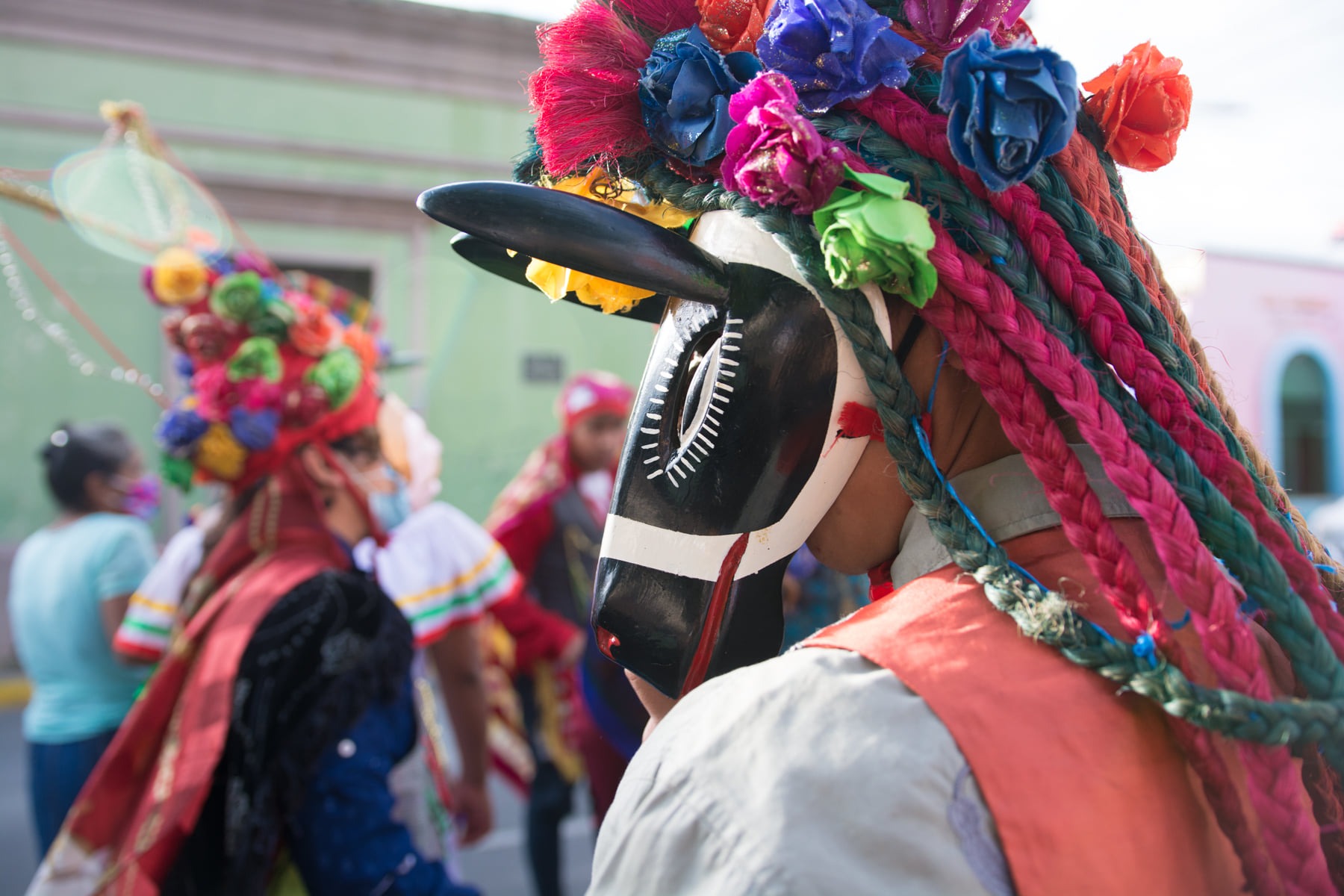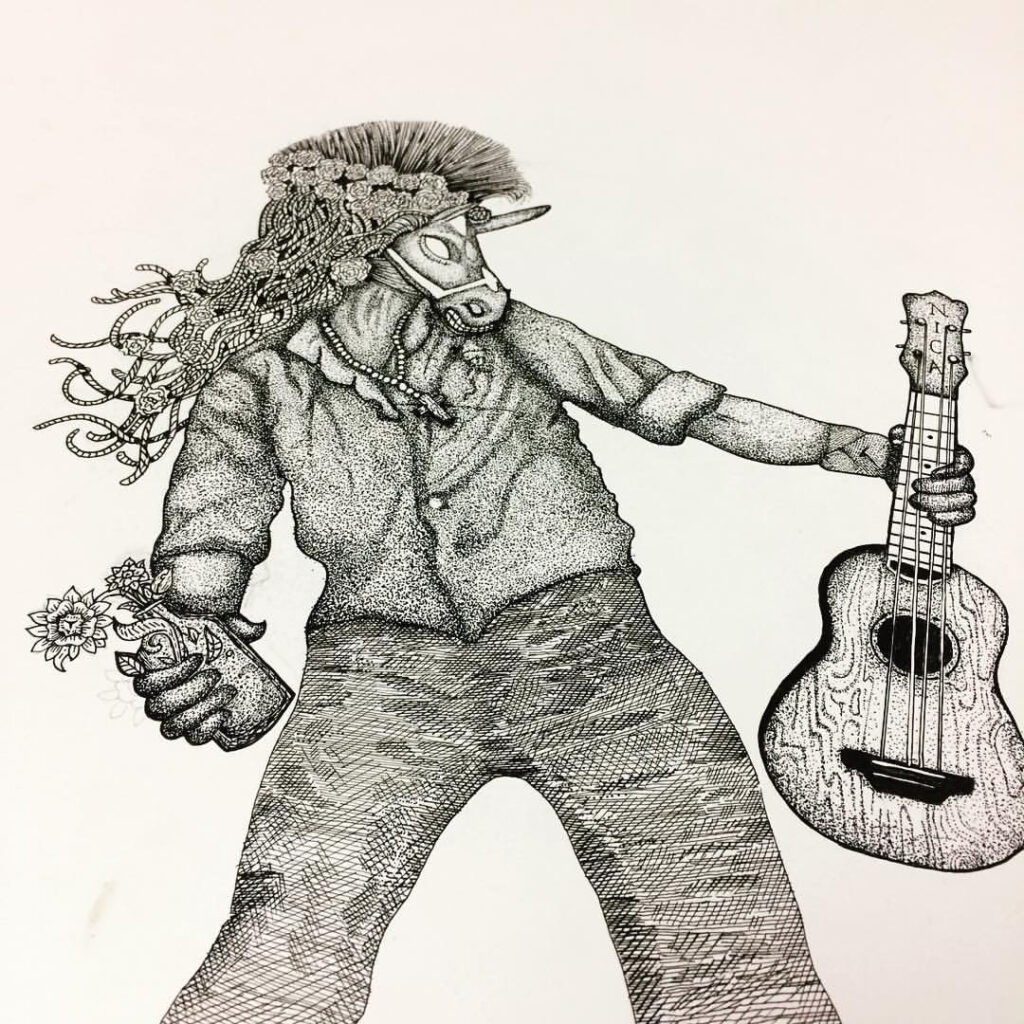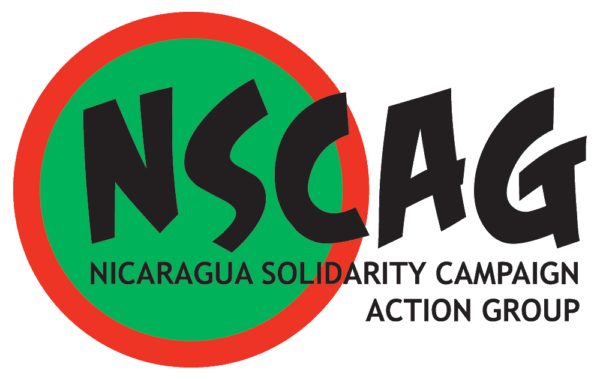Nicaragua Solidarity Campaign Action Group
21 August 2024
The masks of El Gueguense, from Nicaragua to the Mshed Museum in Bristol

On 27 August, over 200 children and 100 adults turned up for a Nicaragua Day to mark the 35th anniversary of the twinning between Bristol and Puerto Morazan in north west Nicaragua.
Children were challenged to guess the artefacts such as a mosquito net, a coffee sack, a hammock and Gueguense dance masks. They took on puzzles putting together poison dart frogs and parrots.
One table saw children making their own prawn reflecting the main economic activity in Puerto Morazan. Prawns also featured in the badge making while others played the Fairtrade coffee game.
On another table children made Gueguense masks based on the characters Macho Raton, el Gueguense himself and Dona Suche Malinche. The room was decorated with over 25 images of Puerto Morazan and
Nicaragua.
The Deputy Lord Mayor turned up as did former Mayor George Ferguson. A massive muchas gracias to Zoe, Jane and the Museums’ team, to Laura for the amazing crafting ideas and to all the volunteers who helped out. And finally thanks also to Bristol International Twinning Association for their generous sponsorship.

Bristol family with their Gueguense masks
——————————————————————————————————————-
El Gueguense, a Nicaraguan story of ingenuity, resistance and survival
Every year for over three centuries, the streets of the city of Diriamba, in southern Nicaragua, come alive with the celebration of the city’s patron saint, San Sebastian. From January 17-27, the festivities include a mass, processions, and horseback riding. But perhaps the most iconic figures are the dances of “El Güegüense” and “El Toro Huaco,” which embody Nicaraguan resilience. To watch a performance click here.
“El Güegüense” is a Nicaraguan satirical drama that combines Spanish and Nahuatl culture, music, and dance. The main character draws his name from the Nahuatl word “huehue,” or old man. In 2005 UNESCO declared the drama as an ‘Oral and Intangible Heritage of Humanity’.
El Gueguense, symbol of ingenuity, resistance and survival
Rather than confront the colonisers directly, El Güegüense, an Natuatl merchant, appears to be subservient and cooperative, while cleverly manipulating appearance, language and feigning deafness to trick them. El Güegüense lures the colonial governor into setting up a marriage between his son and the governor’s daughter, a successful way of avoiding paying taxes to the Spanish crown. This is how El Gueguense has become a symbol of resistance, survival, and ingenuity.

In Diriamba, “El Güegüense” dancers wear elaborate costumes and masks while posing as the drama’s mestizo characters, Spanish officials, Doña Suche Malinche and her two ladies, and four beasts of burden. The most notable and recognisable of the beasts is El Macho Ratón (pictured above).

This image, dating back to the period of the insurrection against the Somoza dictatorship, was created by the Managua design company Folk Nica. It combines the Macho Ratón’s face with a famous photo of the “Molotov Man” taken by Susan Meiselas in Nicaragua on July 16, 1979.
This article first appeared in a blog of the Quixote Center 30 June, 2023

